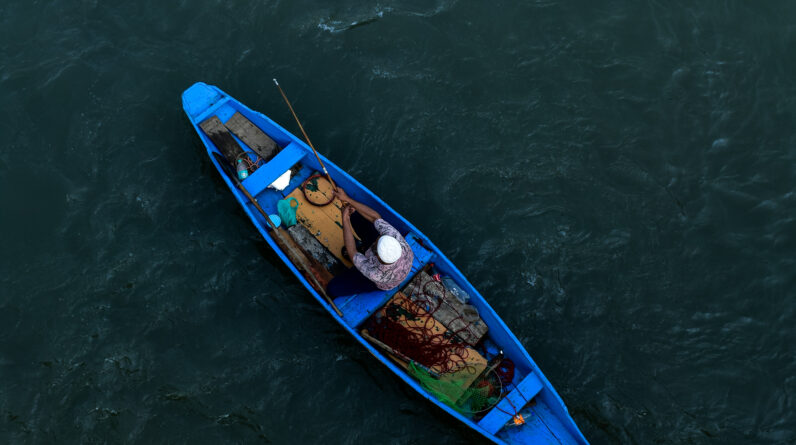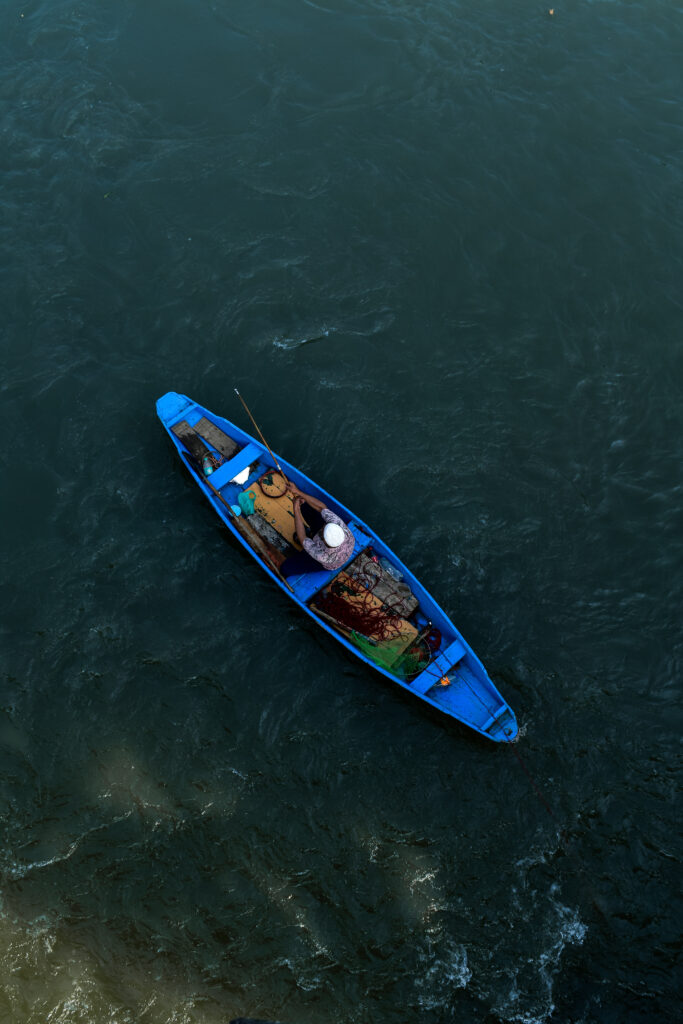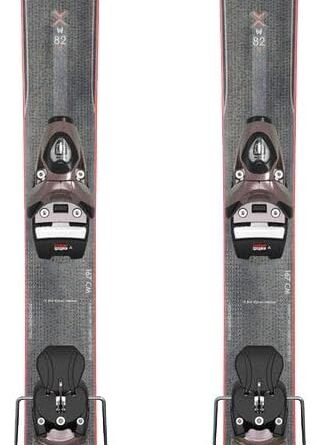
Are you new to the world of kayak crabbing and feeling a bit overwhelmed by the countless options of fishing tackle available? Fear not, because this beginner’s guide is here to help you choose the right type of fishing tackle for your kayak crabbing adventures! Whether you’re an experienced angler or just starting out, selecting the right tackle is crucial for a successful and enjoyable crabbing trip. So grab your gear, hop in your kayak, and let’s explore the wonderful world of fishing tackle together!
A Beginner’s Guide to Selecting Fishing Tackle for Kayak Crabbing
Crabbing from a kayak can be an exciting and rewarding experience, but it’s important to have the right fishing tackle to ensure a successful and enjoyable trip. In this guide, we will explore the different types of fishing tackle that are essential for kayak crabbing, including rods, reels, lines, hooks, weights, baits, crab traps, paddles, PFDs (personal flotation devices), and storage options. By understanding the various features and characteristics of each piece of tackle, you can make informed decisions and enhance your crabbing experience.

This image is property of images.pexels.com.
Rods
When it comes to selecting a fishing rod for kayak crabbing, there are three key factors to consider: length, action, and material.
The length of the rod plays a crucial role in kayak crabbing as it determines how far you can cast and the control you have over your crabbing gear. Generally, shorter rods between 6 and 7 feet are preferred for kayak crabbing as they provide better maneuverability in the confined space of a kayak.
Action refers to the flexibility of the rod and is classified as slow, medium, or fast. For crabbing, a medium to fast action rod is recommended as it offers better sensitivity and helps to detect bites more accurately.
The material of the rod is another important consideration. Graphite and fiberglass are the two most common materials used in fishing rods. Graphite rods are lightweight and sensitive, making them ideal for kayak crabbing. Fiberglass rods, on the other hand, are more durable and can withstand the rough conditions that come with crabbing.
Reels
Choosing the right fishing reel for kayak crabbing is crucial for smooth line management and efficient retrieval. There are two main types of reels to consider: spinning reels and baitcasting reels.
Spinning reels are beginner-friendly and easy to use. They are designed to hang beneath the fishing rod and allow for quick and effortless casting. Spinning reels are recommended for kayak crabbing due to their simplicity and ease of operation.
Baitcasting reels, on the other hand, offer more control and precision but require some skill to operate effectively. They are suitable for experienced anglers who are comfortable with casting and adjusting the drag settings. Baitcasting reels are preferred for targeting larger crabs or when fishing in heavy cover.
When choosing a reel for kayak crabbing, it’s important to consider the line capacity and gear ratio. The line capacity indicates the amount of fishing line that can be spooled onto the reel, and it should match the weight and thickness of the fishing line you plan to use. The gear ratio determines how quickly the fishing line is retrieved. A higher gear ratio means faster retrieval, which can be advantageous when dealing with strong currents or moving targets.
Lines
Selecting the right fishing line for kayak crabbing is crucial for handling the weight and strength of the crabs. There are two main types of fishing lines to consider: monofilament lines and braided lines.
Monofilament lines are made from a single strand of nylon or fluorocarbon. They are versatile, affordable, and offer good knot strength. Monofilament lines have good visibility in the water, which can help in detecting bites. However, they tend to have more stretch compared to braided lines, which can reduce sensitivity.
Braided lines, on the other hand, are made of several strands of synthetic fibers, such as Spectra or Dyneema. They have a thinner diameter, high strength, and low stretch, making them more sensitive and ideal for kayak crabbing. Braided lines also have good abrasion resistance, which is important when dealing with sharp crab shells or rocky bottoms.
When selecting a fishing line for kayak crabbing, consider the line weight and length. The line weight should match the size and weight of the crabs you are targeting. As for the length, a minimum of 100 yards is recommended to accommodate strong and lengthy crab runs.
Hooks
Choosing the right hooks for kayak crabbing is essential for effectively catching and holding onto crabs. Two key factors to consider when selecting hooks are size and style.
Hook size refers to the numerical measurement of the hook’s gap or distance between the shank and the point. For kayak crabbing, smaller hooks in the range of #6 to #2 are recommended as they are better suited for crab baits and can easily fit inside crab mouths.
The style of the hook also plays a role in crabbing success. The most commonly used hook styles for crabbing include J-hooks and circle hooks. J-hooks are the traditional style and are effective for actively hooking and retrieving crabs. Circle hooks, on the other hand, are designed to hook the crab in the corner of the mouth, reducing the chances of gut hooking and increasing the chances of a safe release.
Additionally, consider the material of the hooks. Stainless steel or nickel-plated hooks are recommended for their longevity and resistance to rust and corrosion, which is important in the saltwater environment.

This image is property of images.pexels.com.
Weights
Using the right weights is crucial in keeping your baited hooks securely anchored while crabbing. There are three main types of weights to consider: pyramid sinkers, claw sinkers, and bank sinkers.
Pyramid sinkers are pyramid-shaped weights with flat bases. They are effective for combating strong currents and keeping your bait in place. Claw sinkers, as the name suggests, have a claw-like design and are effective in preventing bait from rolling. Bank sinkers are cylindrical in shape and are recommended for calmer waters or when using lighter tackle.
When choosing weights for kayak crabbing, consider the size of the sinker. The weight size should match the strength of the currents you are fishing in and the weight of your crabbing gear.
Baits
Using the right bait is crucial in attracting crabs to your fishing hooks. There are various types of baits that can be used for kayak crabbing, including chicken necks, fish heads, fish frames, and other natural or artificial baits.
Chicken necks are a popular and readily available bait for crabbing. They are easy to rig onto the hooks and provide a strong scent that can entice crabs from a distance. Fish heads and fish frames are also effective baits, especially when using oily fish like mackerel or bluefish. Other baits, such as razor clams, squid, or shrimp, can also be used depending on the preferences of the crabs in your area.
When selecting baits for kayak crabbing, consider the freshness and quality of the bait. Fresh baits tend to be more attractive to crabs, so try to obtain bait that is sourced locally or from reputable bait shops. Additionally, using bait bags or bait cages can help in securing the bait and preventing the crabs from stealing it.

This image is property of images.pexels.com.
Crab Traps
Using the right crab traps is essential for maximizing your chances of success in kayak crabbing. There are two main types of crab traps to consider: foldable traps and wire mesh traps.
Foldable traps are collapsible traps made of wire or mesh material. They are lightweight and easy to transport, making them ideal for kayak crabbing. Foldable traps are designed to fold flat for easy storage and can be set up quickly once you reach your crabbing spot.
Wire mesh traps, on the other hand, are more durable and can withstand rougher conditions. They are typically made of corrosion-resistant materials, such as stainless steel, and are suitable for longer-term use. Wire mesh traps are recommended for anglers who frequently engage in crabbing or target larger crabs.
When selecting crab traps for kayak crabbing, consider the size and entrance type of the trap. The trap size should be compatible with the size of the crabs you are targeting, and the entrance type should allow for easy entry and exit while preventing crabs from escaping.
Paddle
Having a reliable and suitable paddle is essential in effectively maneuvering your kayak while crabbing. When selecting a paddle, consider the material, length, and blade shape.
The material of the paddle can significantly impact its weight, durability, and performance. Carbon fiber or fiberglass paddles are lightweight and provide a good balance between strength and flexibility. Aluminum paddles are heavier but offer durability and affordability.
The length of the paddle should be suitable for your height and the width of your kayak. As a general rule, the paddle should be long enough to reach the water while your arms are comfortably extended. Adjustable paddles are recommended as they allow for customization depending on your preference and kayak setup.
The blade shape of the paddle can affect its efficiency and performance in the water. A wider blade provides more power and is ideal for quick acceleration and maneuvering. A narrower blade, on the other hand, offers better control and is suited for longer, smoother strokes.
PFD
Wearing a personal flotation device (PFD) is a vital safety measure when engaging in any water activity, including kayak crabbing. PFDs are designed to keep you afloat in case of an emergency and should be worn at all times.
When selecting a PFD for kayak crabbing, consider the fit, buoyancy, and features. The PFD should fit snugly and comfortably, allowing for mobility while providing sufficient buoyancy to keep you afloat in the water. Look for PFDs with adjustable straps and multiple pockets for storing essential items like a whistle, knife, or signaling devices.
A PFD with a high visibility color can improve your visibility to other boaters or rescuers. Additionally, consider PFDs with reflective tape or patches for enhanced visibility during low-light conditions.
Storage
Having adequate storage solutions is essential for keeping your crabbing tackle organized and easily accessible. There are various storage options to consider, including tackle boxes, crab buckets, coolers, and kayak-specific storage solutions.
Tackle boxes are a popular choice for organizing and storing fishing tackle. Look for tackle boxes with multiple compartments and adjustable dividers to accommodate different items, such as hooks, weights, and baits. Tackle boxes with waterproof seals or cases are ideal for kayak crabbing as they protect your gear from water damage.
Crab buckets are specifically designed for storing live crabs. Look for buckets with lid vents or cutouts to allow for water circulation and drainage. Opt for buckets with secure handles and sturdy construction to prevent spillage or escape.
Coolers are versatile storage options that can be used to store your catch, bait, and other perishable items. Look for coolers with insulation and reliable closures to maintain the desired temperature and prevent spillage.
For kayak-specific storage solutions, consider options such as gear tracks, bungee cords, or storage hatches. These accessories can be attached to your kayak to create additional storage space or secure your gear during your crabbing trip.
In conclusion, selecting the right fishing tackle for kayak crabbing is crucial for a successful and enjoyable experience. By considering the features and characteristics of rods, reels, lines, hooks, weights, baits, crab traps, paddles, PFDs, and storage options, you can enhance your crabbing adventures and increase your chances of reeling in a good catch. Remember to always prioritize safety, follow local regulations, and respect the environment while enjoying your kayak crabbing pursuits. Happy crabbing!






